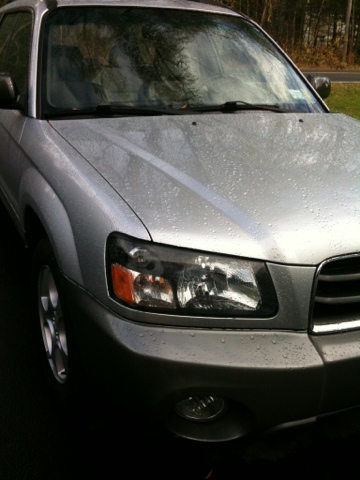The notorious head gasket failure finally occurred. Like the timing belt change I did last year, I didn't take my Forester to the Subaru dealer and hand over $1,600. Instead I again went to the web and my Chilton manual, and dug in.
DIY Difficulty Level: 7/10
This can be done by an experienced home mechanic in a reasonable amount of time. For me, it was a week. And that was only because the heads were at the machine shop for 4 days. If you are able to do your own timing belt change, you already have most of the tools and skill needed to do your own head gaskets.
Required Tools
You will need 3/8" and 1/2" torque wrenches, a twelve point 14mm socket, a torque angle meter, a floor jack, and an assortment of common hand tools. If you have done your own timing belt change before, you have what you need and this isn't a big trick.
References
There is no sense going to go into the whole process myself. There are tons of people who have been kind enough to create in depth videos and tutorials on the process. Here are the best that I have found, but I'm sure a Google search will yield the latest and greatest:
Tips
My biggest tip is to disassemble as little as possible. When removing the intake manifold, do not disconnect everything. The manual suggests that you remove the intake manifold completely. Don't do it. Only remove enough crap to get at the bolts, and nothing more. Pull off the alternator and A/C compressor (without disconnecting the lines) first. You can support the whole assembly on scraps of wood. The manifold just needs to be far enough away from the heads to remove them.
Other Tips
- Soak the exhaust manifold studs with PB Blaster at least 8 hours before trying to remove them. The combination of aluminum head, steal studs, stainless nuts, high heat, and road salt catalyzed by water pretty much welds everything together. Do not skip this tip!
- Use assembly lube on all cam and rocker roller surfaces before re-installing the heads. This is just good practice, and doesn't hurt anything.
My 2003 Subaru Forester Log
Friday, February 17, 2012
First Entry - 2003 Subaru Forester XS
This is simply a maintenance record for my 2003 Subaru Forester XS (US market version). This first post will summarize the history of my Forester up to the date that I am starting this blog. Hopefully it will prove useful to others with SG chassis (2003-2008) Subaru Foresters.
~106,000 Miles: Timing Belt Change
The Subaru recommended timing belt (cam belt) change interval on the normally aspirated SOHC 2.5L 4-cylinder EJ25 engine is 105,000 miles. Part of paying the low price for the car was knowing that I was going to have to change the timing belt.
So I searched out the details on the internet (mostly from www.SubaruForester.org) and from my copy of the Chilton Manual and discovered that it wasn't that big of a deal to do. So I bought a full front of engine overhaul kit from a great source on eBay (it was all name brand parts from GKN, Continental, etc.) that included all new cam seals, front crank seal, new timing belt, new idler pulleys, new tensioner, and new waterpump. All nice quality stuff for a great price.
~99,000 Miles: My New (Used) Forester
I purchasedmy Forester used from a dealer in Reading, PA in September of 2010. I was purposely looking for a 2003-2005 Forester with a 5-speed manual transaxle to replace my 2002 WRX that I had sold the year before. I was hoping for a car with under 100,000 miles on the odometer, no accident history, and a gray interior (I can't stand beige interiors on cars). More importantly, I wanted one that was reasonably maintained to begin with with. I was not concerned about exterior color or overall appearance.
This car was the perfect match for my criteria. 99,000 miles on the clock, gray interior, and in very good mechanical order. The dealer took it in trade from the original owner as a favor and did not want it on their lot which primarly focused on newer used European cars (mostly BMW). So they were unloading it as-is for $6,500. Perfect for me.
The interior was perfect except for wear on the driver's side carpet. I don't think anyone had ever sat in the passenger seats over it's life. The exterior was completely rust free (gotta love southern PA, no road salt) but had all kinds of dents and dings on the passenger side. I suspect it was an older driver as most of the damage looked like it was from running into the side of a garage, or things falling over on it. All in all, it was a steal.
Subscribe to:
Posts (Atom)
